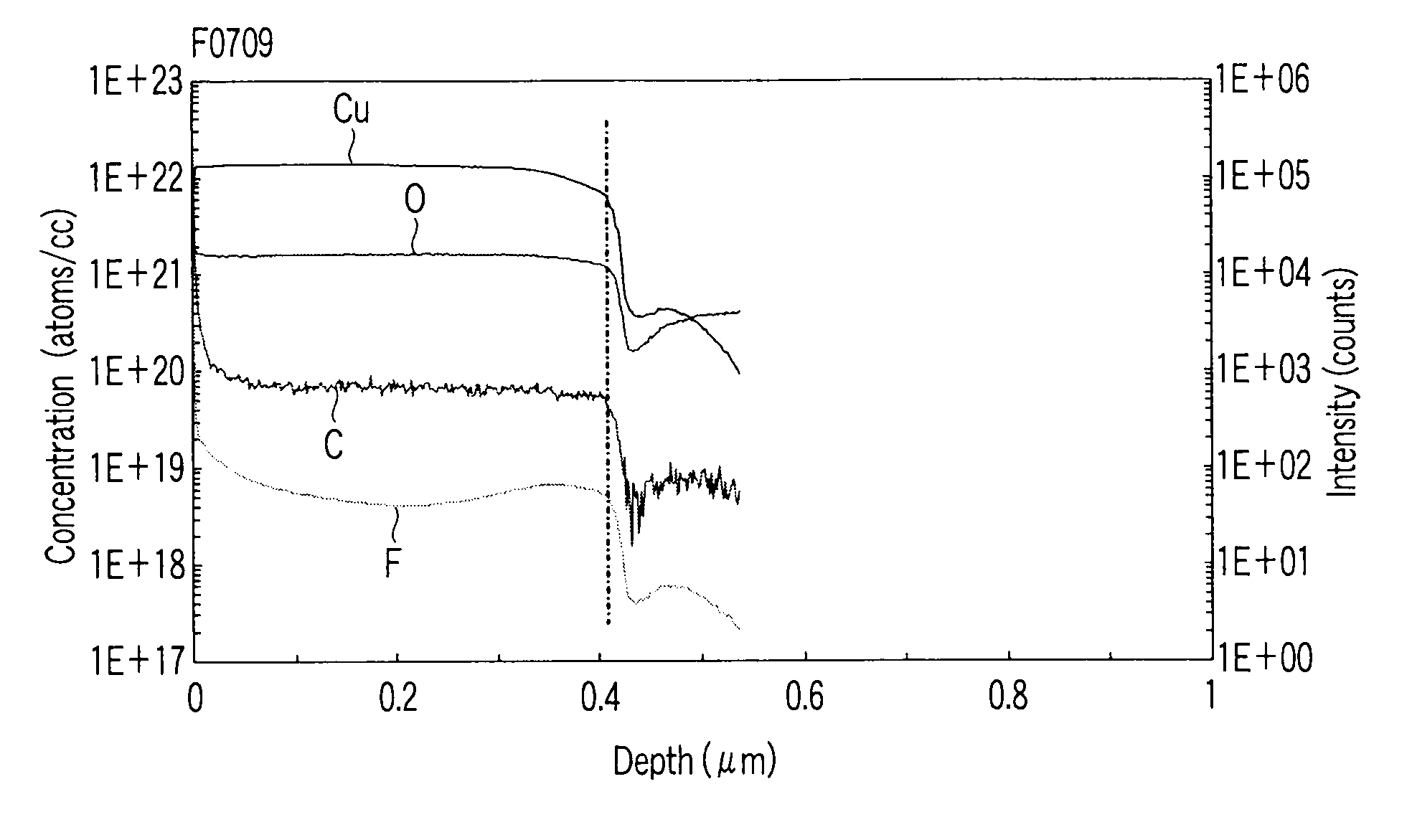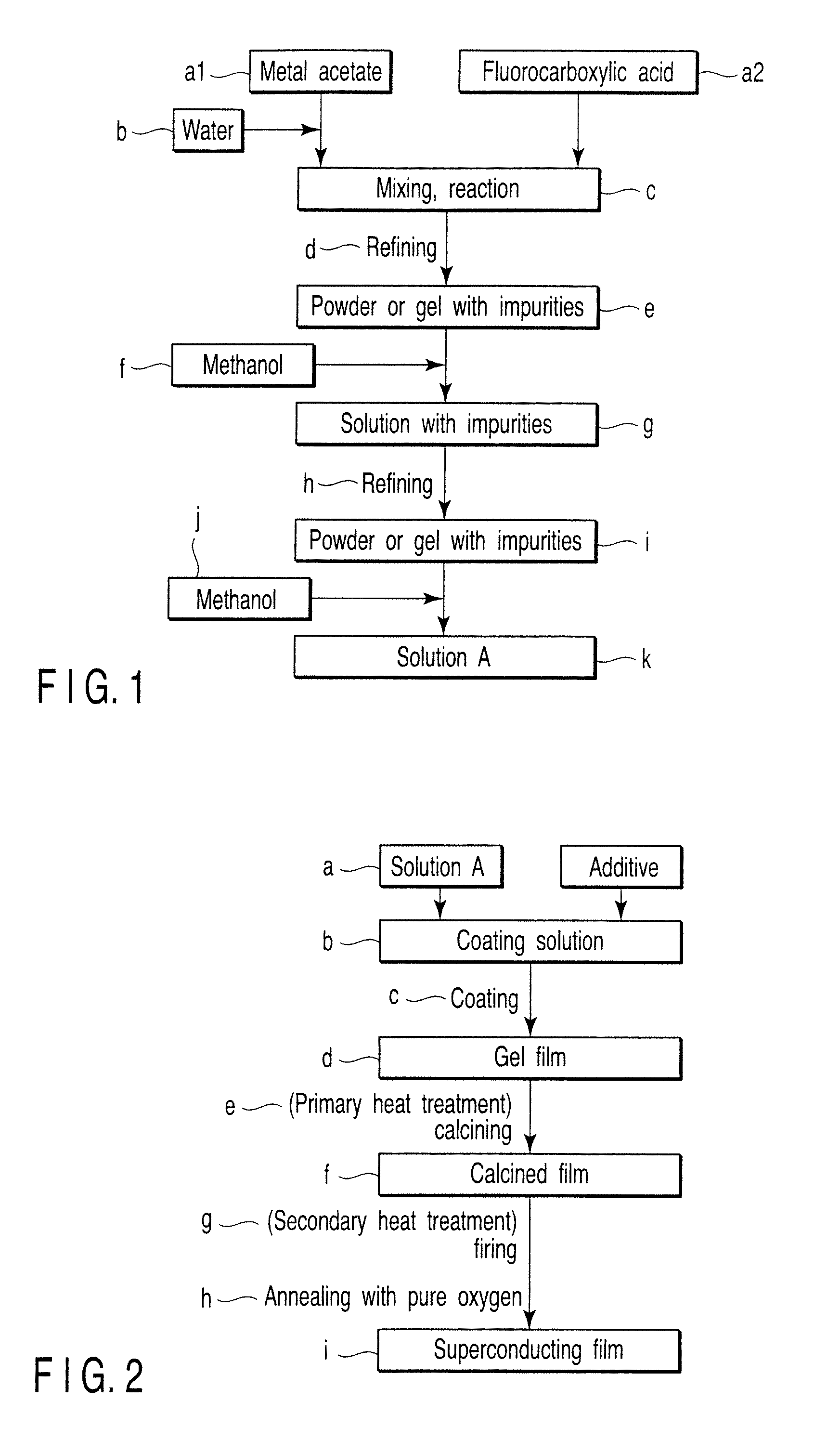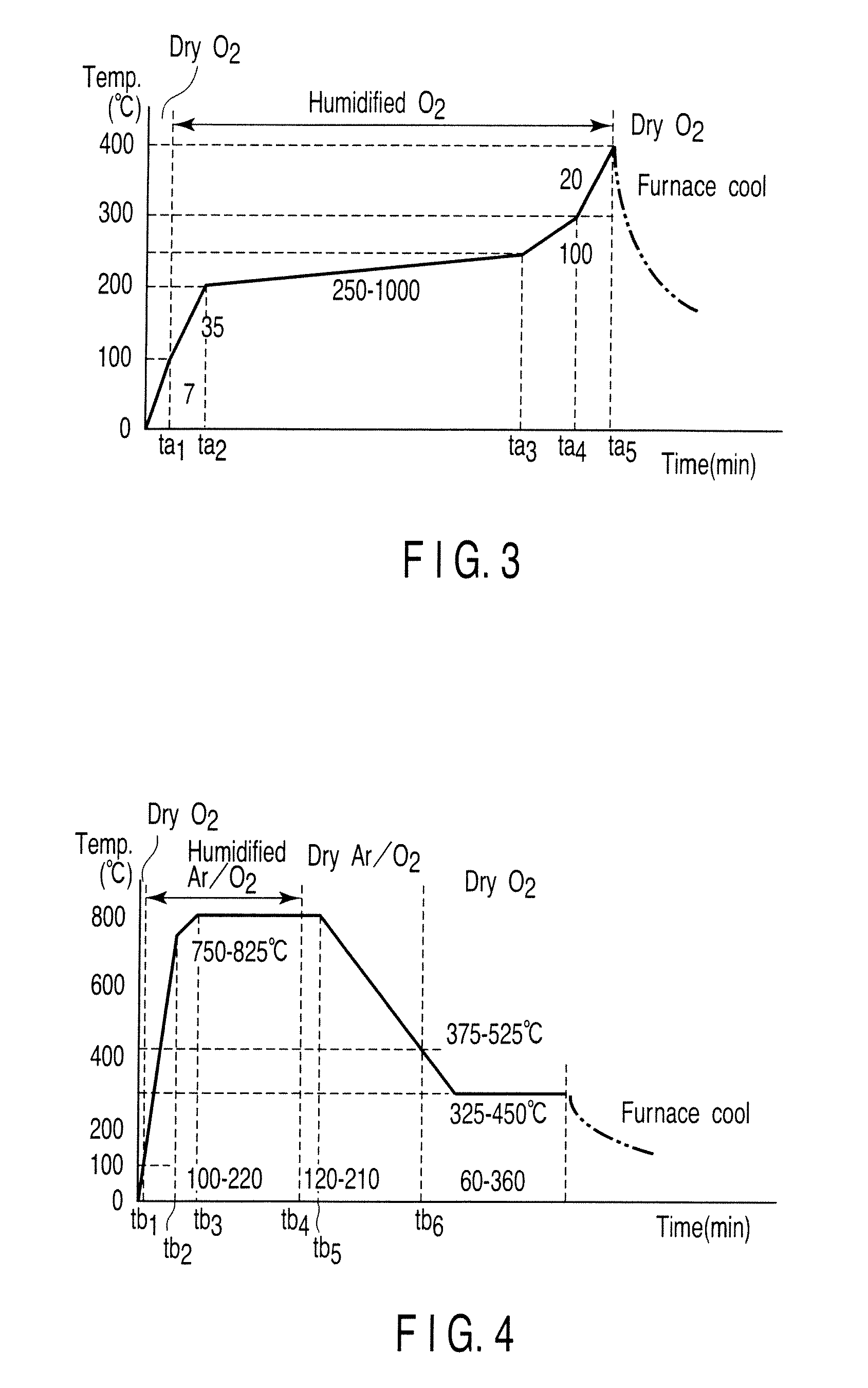Oxide superconductor and method for producing the same
a superconductor and superconductor technology, applied in the direction of superconducting magnets/coils, magnetic bodies, liquid/solution decomposition chemical coatings, etc., can solve the problems of high production cost, difficult control of production conditions, and difficult to obtain good superconductors
- Summary
- Abstract
- Description
- Claims
- Application Information
AI Technical Summary
Benefits of technology
Problems solved by technology
Method used
Image
Examples
example 1
[0071]Powders of hydrates of Y(OCOCH3)3, Ba(OCOCH3)2 and Cu(OCOCH3)2 were dissolved in ion-exchange water, and each solution was mixed with an equimolar amount of CF3COOH for reaction with stirring. These solutions were mixed so that molar ratio of metal ions is 1:2:3 to obtain a mixed solution. The mixed solution obtained was placed in a round-bottom flask, and was allowed to react for 12 hours in vacuum with purification using a rotary evaporator to obtain a semi-transparent blue gel or sol.
[0072]A solution, which was obtained by completely dissolving the gel or sol by adding methanol (FIG. 1f) corresponding to 100 times the weight of the gel or sol, was purified in vacuum for 12 hours using a rotary evaporator to obtain a semi-transparent blue gel or sol.
[0073]The gel or sol obtained was dissolved again in methanol (FIG. 1j), and was diluted using a measuring flask to obtain coating solution A with a concentration of 1.52M as reduced into the concentration of metal ions.
[0074]Coa...
example 2
[0085]Powders of hydrates of Y(OCOCH3)3, Ba(OCOCH3)2 and Cu(OCOCH3)2 were dissolved in ion-exchange water, and each solution was mixed with an equimolar amount of CF3COOH for reaction with stirring. These solutions were mixed so that the molar ratio of metal ions was 1:2:3 to obtain a mixed solution. The mixed solution obtained was placed in a round-bottom flask, and was allowed to react for 12 hours in vacuum with purification using a rotary evaporator to obtain a semi-transparent blue gel or sol.
[0086]A solution, which was obtained by completely dissolving the gel or sol by adding methanol (FIG. 1f) corresponding to 100 times the weight of the gel or sol, was purified in vacuum for 12 hours using a rotary evaporator to obtain a semi-transparent blue gel or sol.
[0087]The gel or sol obtained was dissolved again in methanol (FIG. 1j), and was diluted using a measuring flask to obtain coating solution 2A with a concentration of 1.52M as reduced into the concentration of metal ions.
[00...
example 3
[0099]Powders of hydrates of Y(OCOCH3)3, Ba(OCOCH3)2 and Cu(OCOCH3)2 were dissolved in ion-exchange water, and each solution was mixed with an equimolar amount of CF3COOH for reaction with stirring. These solutions were mixed so that molar ratio of metal ions is 1:2:3 to obtain a mixed solution. The mixed solution obtained was placed in a round-bottom flask, and was allowed to react for 12 hours in vacuum with purification using a rotary evaporator to obtain a semi-transparent blue gel or sol.
[0100]A solution, which was obtained by completely dissolving the gel or sol by adding methanol (FIG. 1f) corresponding to 100 times the weight of the gel or sol, was purified in vacuum for 12 hours using a rotary evaporator to obtain a semi-transparent blue gel or sol.
[0101]The gel or sol obtained was dissolved again in methanol (FIG. 1j), and was diluted using a measuring flask to obtain coating solution 3A with a concentration of 2.31M as reduced into the concentration of metal ions. Accordi...
PUM
| Property | Measurement | Unit |
|---|---|---|
| thickness | aaaaa | aaaaa |
| thickness | aaaaa | aaaaa |
| length | aaaaa | aaaaa |
Abstract
Description
Claims
Application Information
 Login to View More
Login to View More - R&D
- Intellectual Property
- Life Sciences
- Materials
- Tech Scout
- Unparalleled Data Quality
- Higher Quality Content
- 60% Fewer Hallucinations
Browse by: Latest US Patents, China's latest patents, Technical Efficacy Thesaurus, Application Domain, Technology Topic, Popular Technical Reports.
© 2025 PatSnap. All rights reserved.Legal|Privacy policy|Modern Slavery Act Transparency Statement|Sitemap|About US| Contact US: help@patsnap.com



